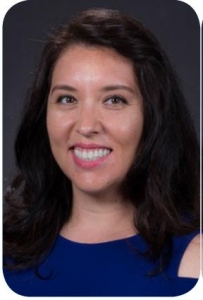When I was informed that I would be rotating in correctional health at Fourth Avenue, I was nervous. I told my husband about my placement, and he was nervous. Fourth Avenue Intake is the first stop for arrested individuals in Maricopa County. What kinds of people would I see there? The Baseline killer? The murderers of 10-year old Ame Deal? Jodi Arias? They’ve all been seen by the medical providers of Fourth Avenue Intake. While these individuals and their horrific crimes dominate the headlines, most people seen in jail largely fall into the joint category of mental illness and substance abuse.
Through numerous patient interviews, I discovered that drugs and alcohol were the medication of choice for those suffering from schizoaffective disorder, schizophrenia, major depressive disorder, bipolar disorder, and post-traumatic stress disorder, to name a few psychiatric illness they suffered. Often, those that were seriously mentally ill had become addicted because street drugs and alcohol were more readily available than the medications required to treat their respective conditions. There was the bipolar woman who sat sobbing in a safe cell because she did not know where her children were; there was the schizophrenic woman who threw herself against the wall and screamed in agony over her deceased child; there was the elderly Vietnam veteran with PTSD that ‘shot up’ because it was the only way to drown out the tortured screams in his head; and the disturbed young man who overdosed in holding because he tried to smuggle in the heroin that would hold him over until his release. Fourth Avenue is the doorway to much of what is wrong with society. It’s a Bermuda Triangle of the failings of healthcare, education, and politics, where those who are unfortunate enough to enter are lost and forgotten by the rest of us. I have many memories from my short-stint in correctional health, but one experience has stood out more than the rest.
A few weeks ago, my preceptor was called to pre-intake to assess a patient that would possibly require a safe cell. When we arrived, a boy no more than 20 was seated with his head hanging low in a hospital gown and jeans that were crusted over with dried blood. I reviewed his discharge papers as my preceptor interviewed him and learned that this young man had been cutting himself since he was nine-years old. The voices in his head had told him for many years that he deserved to bleed, and he had tried to kill himself more times than he could remember. He had been committed to Aurora a few times, each time released with bottles of medication. But that medication always ran out, and he didn’t have the money or insurance he needed to refill them. He denied doing drugs, but he admitted that he drank a lot. That’s how he ended up there. With a blood alcohol level of 0.24, he assaulted someone. His wife? A girlfriend? A friend? That part wasn’t clear. He said he knew what he did was wrong, and that he believed he deserved to die because of it, so he grabbed a kitchen knife and began to stab himself with wild abandon.
We lifted his shirt and saw the deep cuts in his abdomen, shoulders, and neck. As he spoke, I imagined him as a young boy, and wondered how many times the buck was passed to someone else before he landed in the chair across from me that day. I felt sorrow for him and his suffering; I felt anger at a flawed mental health system that allowed him to fall through its cracks; and I felt frustration that we did not have the power to do more than offer an exam, a sympathetic ear, and a sip of water. Again, the buck would be passed. To Lower Buckeye? To prison? And then what?
It was determined that he needed to go to a safe bed because of the risk that the large staples in his wounds would be picked and used as weapons. He was soft-spoken throughout the encounter, docile even. We watched as several detention officers brought him into an isolation cell and shackled his wrists and ankles to a rusty bed. It’s an image I will never forget. I wonder, how many images will become “an image I will never forget?” People have told me that you become desensitized, or even hardened, and that frightens me. I don’t want to become hardened or desensitized. But how do I keep my empathy, and compassion without bearing the weight of all the suffering I have seen and will see? I haven’t figured out the answer to that yet, but I am determined to.
Kristina Yancey is a member of The University of Arizona College of Medicine – Phoenix, Class of 2022. She graduated from The City University of New York-Staten Island in 2008 with a dual Bachelor of Science degree in Biochemistry & Chemistry, earned a master’s degree in Educational Leadership from Arizona State University in 2017 and completed a Graduate Certificate in Health Sciences through the Pathway Scholars Program at The University of Arizona College of Medicine – Phoenix in 2018. She enjoys research, community activism, singing Karaoke, dancing, and cracking up at her own jokes. But most of all, she enjoys spending quality time with her husband and daughter.
Email: kyancey@email.arizona.edu


